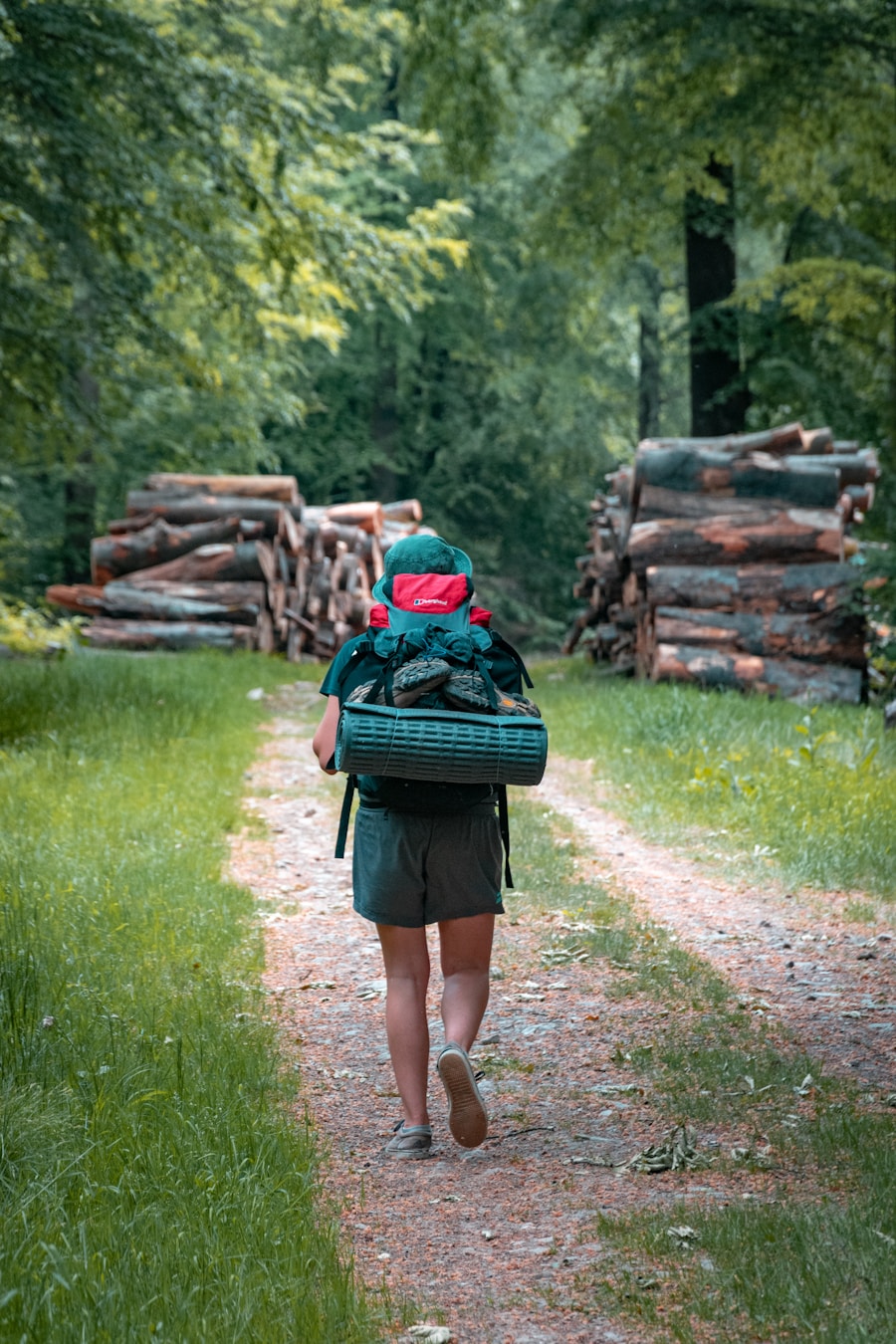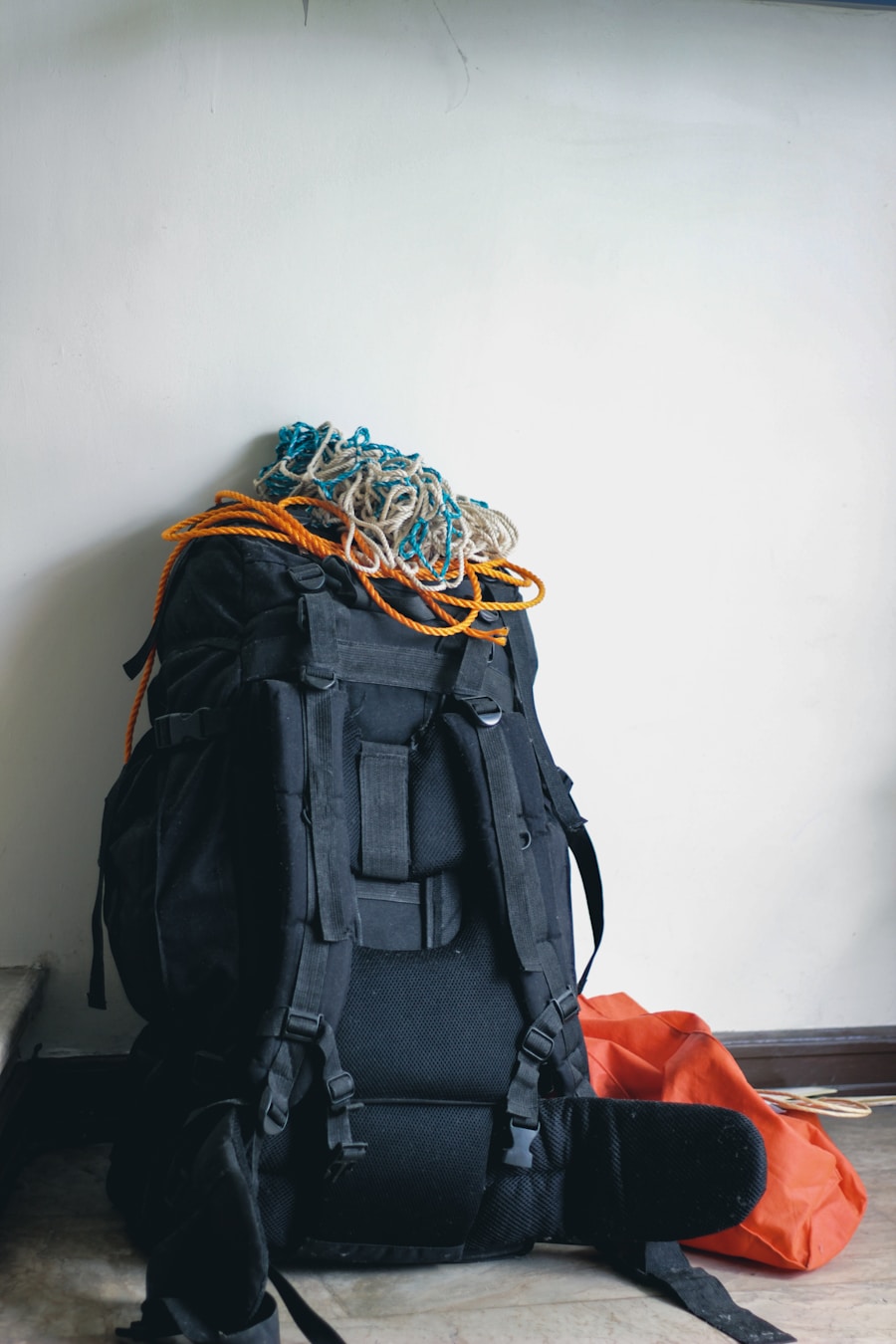Selecting the appropriate backpack for your hiking adventure is a critical first step that can significantly influence your overall experience. The right pack should align with the duration of your hike, the terrain you will encounter, and your personal comfort preferences. For day hikes, a smaller daypack with a capacity of 15 to 30 liters is often sufficient, allowing you to carry essentials without being weighed down.
Conversely, for multi-day treks, a larger backpack ranging from 50 to 70 liters is advisable, providing ample space for food, shelter, and other necessities. When choosing a pack, consider features such as adjustable straps, hip belts, and ventilation systems that enhance comfort and support during long hours on the trail. Another crucial aspect to consider is the fit of the backpack.
A well-fitted pack should sit comfortably on your back without causing strain or discomfort. Many outdoor retailers offer fitting services where you can try on various models and adjust them to your body shape. Pay attention to the torso length and hip belt size, as these factors can greatly affect how the weight is distributed across your body.
Additionally, look for packs with multiple compartments and pockets that allow for easy organization of gear. This not only helps in accessing items quickly but also aids in maintaining balance while hiking.
Key Takeaways
- Choose a backpack with the right size and fit for your hike to ensure comfort and proper weight distribution.
- Pack lightweight, moisture-wicking clothing and sturdy, comfortable footwear to protect against the elements and prevent blisters.
- Carry essential navigation tools, first aid supplies, and emergency gear such as a whistle and fire starter for safety on the trail.
- Pack high-energy, lightweight snacks and a water filtration system to stay nourished and hydrated during your hike.
- Invest in a lightweight, compact sleeping bag and shelter to ensure a comfortable night’s rest while saving space in your pack.
Packing Essentials: Clothing and Footwear
Base Layer: Moisture-Wicking Essentials
The base layer should consist of moisture-wicking materials that keep sweat away from your skin, ensuring you remain dry and comfortable. Fabrics such as merino wool or synthetic blends are excellent choices for this layer.
Middle and Outer Layers: Insulation and Weather Protection
The middle layer serves as insulation; fleece or down jackets are popular options that provide warmth without adding excessive bulk. Finally, the outer layer should be weather-resistant, protecting you from wind and rain. Look for jackets with breathable fabrics that allow moisture to escape while keeping you dry from external elements.
Footwear: Support, Traction, and Comfort
Footwear is equally important in ensuring a successful hiking experience. Hiking boots or shoes should provide adequate support and traction, especially if you plan to traverse rocky or uneven terrain. When selecting footwear, consider the type of hike you will undertake; lightweight trail runners may suffice for well-maintained paths, while sturdy boots are essential for rugged trails. It’s advisable to break in new shoes before embarking on a long hike to prevent blisters and discomfort. Additionally, wearing moisture-wicking socks can help reduce friction and keep your feet dry, further enhancing your comfort on the trail.
Essential Gear: Navigation, First Aid, and Emergency Supplies

Navigational tools are indispensable for any hiking trip, particularly in unfamiliar areas. A reliable map and compass should be part of your essential gear, even if you plan to use a GPS device or smartphone app. Technology can fail due to dead batteries or lack of signal, making traditional navigation skills vital.
Familiarize yourself with reading topographic maps and using a compass before heading out. Additionally, consider carrying a portable power bank to keep your devices charged throughout your hike. First aid kits are another critical component of your hiking gear.
A well-stocked first aid kit should include items such as adhesive bandages, antiseptic wipes, gauze pads, adhesive tape, pain relievers, and any personal medications you may need. It’s also wise to include items like blister treatment and insect repellent. Knowing how to use these supplies is just as important as having them; consider taking a basic first aid course to prepare yourself for potential emergencies on the trail.
Furthermore, packing emergency supplies such as a whistle, multi-tool, and fire-starting materials can be lifesaving in unexpected situations.
Food and Water: How to Pack and Stay Hydrated on the Trail
| Item | Weight (oz) | Calories | Hydration (oz) |
|---|---|---|---|
| Trail Mix (1 cup) | 4 | 693 | – |
| Granola Bar | 1.5 | 190 | – |
| Beef Jerky (1 oz) | 1 | 116 | – |
| Dehydrated Meal | 5 | 400-600 | – |
| Energy Gel | 1 | 100 | – |
| Water (per liter) | – | – | 33.8 |
| Sports Drink (per liter) | – | – | 33.8 |
Proper nutrition and hydration are crucial for maintaining energy levels during a hike. When planning your meals, opt for lightweight, high-calorie foods that are easy to prepare and consume on the go. Trail mix, energy bars, dried fruits, and jerky are excellent choices that provide quick energy without taking up much space in your pack.
If you’re hiking for multiple days, consider dehydrated meals that only require hot water for preparation; these meals are compact and can be quite satisfying after a long day on the trail. Staying hydrated is equally important; carrying enough water is essential for preventing dehydration. A general rule of thumb is to drink about half a liter of water per hour while hiking, but this can vary based on factors such as temperature and exertion level.
Hydration systems like CamelBak bladders allow for easy sipping while on the move, but traditional water bottles are also effective if packed securely in your bag. If you’re hiking in an area with natural water sources, consider bringing a water filter or purification tablets to ensure safe drinking water along the way.
Shelter and Sleeping Gear: Tips for a Comfortable Night’s Rest
For overnight hikes or multi-day excursions, selecting the right shelter is paramount for a good night’s sleep. Tents come in various shapes and sizes; lightweight backpacking tents are designed for portability without sacrificing durability or weather resistance. When choosing a tent, consider factors such as weight, ease of setup, and space requirements based on the number of occupants.
Additionally, look for features like vestibules for gear storage and good ventilation to prevent condensation buildup inside. Sleeping gear also plays a significant role in ensuring comfort during your outdoor adventures. A sleeping bag rated for the expected temperatures is essential; down bags offer excellent insulation-to-weight ratios but can be more expensive than synthetic options.
Pair your sleeping bag with a sleeping pad that provides cushioning and insulation from the cold ground. Inflatable pads are lightweight and packable but may require more care than foam pads. Consider bringing a small pillow or using clothes stuffed in a stuff sack as an alternative to enhance your sleeping comfort.
Lightweight and Multi-Purpose Items to Save Space

When packing for a hike, every ounce counts; therefore, opting for lightweight and multi-purpose items can significantly reduce the burden on your back. For instance, a multi-tool can serve various functions—acting as a knife, screwdriver, or can opener—eliminating the need to carry separate tools. Similarly, consider packing collapsible cookware that can double as storage containers when not in use.
This approach not only saves space but also minimizes the number of items you need to manage during your hike. Another strategy is to choose clothing that serves multiple purposes; for example, convertible pants can be zipped off into shorts when temperatures rise. Look for jackets that offer both insulation and waterproofing features so you can adapt to changing weather conditions without needing multiple layers.
Additionally, lightweight hammocks can serve as both a resting spot during breaks and a sleeping option at night if trees are available at your campsite.
Packing Techniques: How to Distribute Weight and Organize Your Pack
Effective packing techniques are essential for maintaining balance and comfort while hiking. Start by placing heavier items close to your back and centered within the pack; this helps distribute weight evenly and reduces strain on your shoulders. Items such as food supplies or cooking gear should be packed low in the pack to lower your center of gravity.
Conversely, lighter items like clothing can be placed higher up or in external pockets for easy access. Organizing your pack into compartments can also enhance efficiency on the trail. Use stuff sacks or packing cubes to categorize gear by type—such as clothing, cooking supplies, or first aid—making it easier to find what you need without rummaging through everything.
External pockets are ideal for frequently accessed items like snacks or maps; this allows you to grab them quickly without unpacking your entire bag. Additionally, securing items like trekking poles or sleeping pads externally can free up space inside your pack.
Final Checklist: Important Items to Double-Check Before Hitting the Trail
Before embarking on your hiking adventure, it’s crucial to conduct a final checklist review to ensure you haven’t forgotten any essential items. Start by confirming that you have all necessary clothing layers packed according to the weather forecast—this includes base layers, insulation layers, outer shells, hats, gloves, and appropriate footwear. Next, check that all essential gear is included: navigation tools like maps and compasses should be easily accessible alongside first aid kits and emergency supplies.
Don’t overlook food and hydration; ensure you have enough snacks and water for the duration of your hike along with any cooking equipment if needed. Verify that your shelter and sleeping gear are packed correctly—this includes checking that tent stakes are included if applicable—and ensure that all items are securely stowed away in your pack to prevent shifting during transit. Finally, take a moment to review any personal items such as identification or cash that may be necessary during your trip; this thorough preparation will help set the stage for an enjoyable hiking experience.
If you’re looking for more travel tips and advice, be sure to check out this article on the best carry-on luggage for international travel. It provides valuable insights on choosing the right luggage for your next adventure. And while you’re at it, don’t forget to read up on how to pack a hiking pack to ensure you’re fully prepared for your outdoor excursions.
Love travel? Join Our Facebook Community
FAQs
What is a hiking pack?
A hiking pack is a backpack specifically designed for carrying gear and supplies during a hiking or backpacking trip. It is designed to evenly distribute the weight of the load and provide support and comfort for the wearer.
What should I consider when choosing a hiking pack?
When choosing a hiking pack, consider factors such as the duration of your hike, the amount of gear and supplies you need to carry, your body size and shape, and the features and comfort of the pack.
How do I pack a hiking pack?
When packing a hiking pack, start by placing heavy items at the bottom and close to your back, followed by lighter items. Keep frequently used items easily accessible and distribute the weight evenly. Use compression straps to secure the load and maintain balance.
What are some essential items to pack in a hiking pack?
Essential items to pack in a hiking pack include a map and compass, water and water purification system, food and snacks, extra clothing layers, first aid kit, emergency shelter, fire-starting tools, and a multi-tool or knife.
How do I adjust and fit a hiking pack properly?
To adjust and fit a hiking pack properly, start by adjusting the shoulder straps, then the hip belt, and finally the load lifters and sternum strap. The pack should sit comfortably on your hips and the shoulder straps should not dig into your shoulders.
